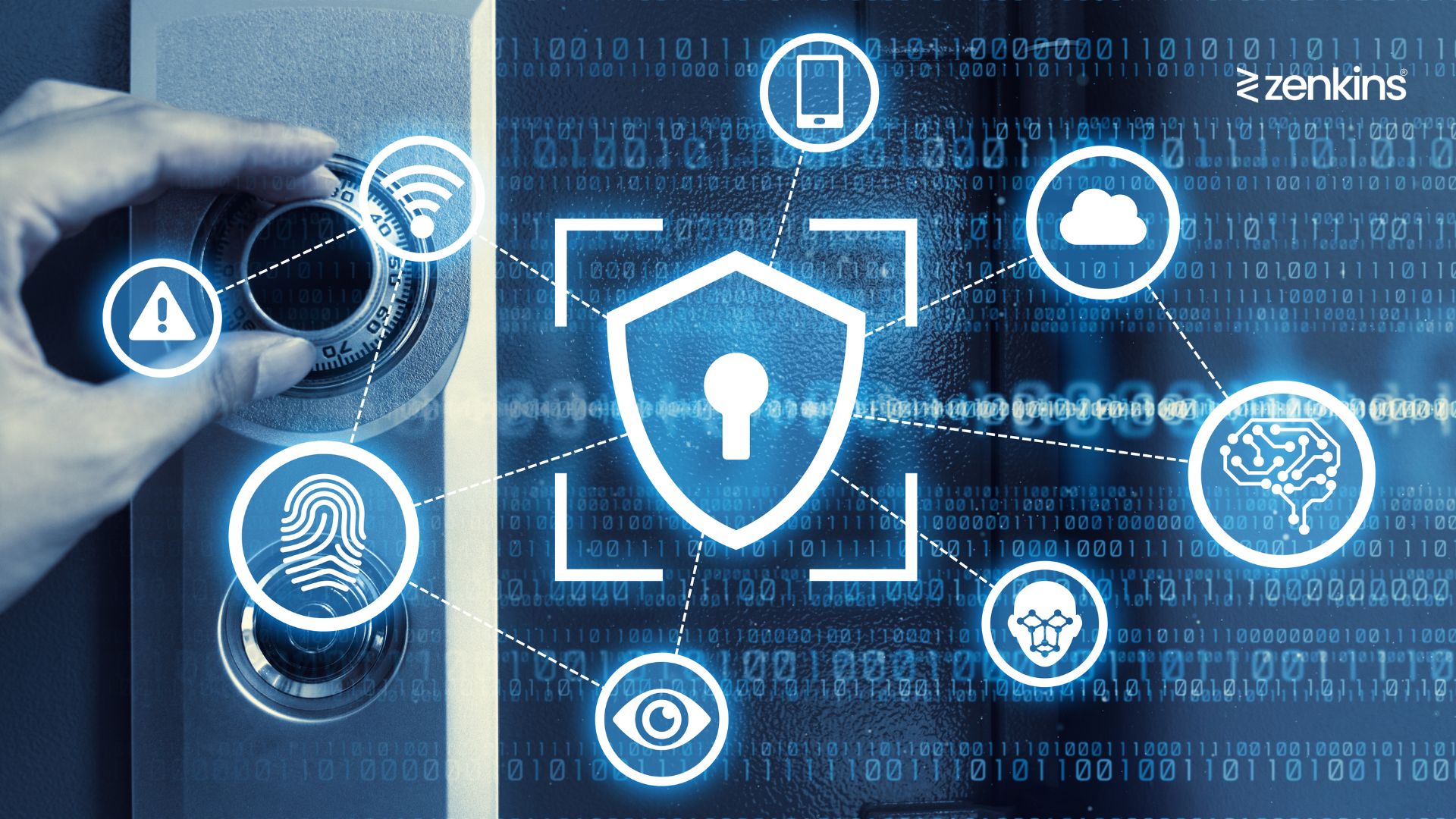Secure Coding Practices: Safeguarding Your Software from Vulnerabilities
Table of Contents
Software vulnerabilities can pose significant risks to the security and integrity of digital systems, making secure coding practices an essential aspect of software development. In today’s interconnected world, where cyber threats continue to evolve, it is crucial for developers to prioritize the implementation of robust security measures. This article aims to provide a comprehensive overview of secure coding practices, offering insights into common software vulnerabilities, emphasizing the importance of secure coding, and exploring key principles and best practices. By understanding and implementing these techniques, developers can safeguard their software from potential vulnerabilities, enhance the overall security posture, and mitigate the risks associated with cyberattacks and data breaches.
Introduction to Secure Coding Practices
What is Secure Coding?
When we talk about secure coding, we’re referring to the practice of writing software in a way that minimizes vulnerabilities and protects against potential threats. It involves applying coding techniques and following best practices to ensure the software’s resilience against attacks.
The Importance of Secure Coding
In today’s digital landscape, where cyber threats are constantly evolving, secure coding is more important than ever. By implementing secure coding practices, developers can significantly reduce the risk of software vulnerabilities, data breaches, and other security incidents. It not only protects the software itself but also safeguards sensitive user information.
Understanding Common Software Vulnerabilities
Overview of Software Vulnerabilities
Software vulnerabilities are weaknesses or flaws in code that can be exploited to compromise the security of an application. They can range from simple coding mistakes to complex design flaws, and they provide entry points for attackers to gain unauthorized access, execute malicious code, or manipulate data.
Common Types of Software Vulnerabilities
There are several common types of software vulnerabilities that developers should be aware of. These include buffer overflows, SQL injection, cross-site scripting (XSS), insecure direct object references, and insecure deserialization. Each vulnerability has its own unique characteristics and can have devastating consequences if left unaddressed.
Real-World Examples of Software Vulnerabilities
To understand the impact of software vulnerabilities, let’s take a look at some real-world examples. Remember the infamous Heartbleed bug that affected OpenSSL? It exposed millions of websites to potential data leaks. Another example is the Equifax data breach, where attackers exploited a vulnerability in an Apache Struts component, resulting in the exposure of sensitive personal information of millions of people.
Importance of Secure Coding in Software Development
Why Secure Coding Matters
Secure coding is crucial because it serves as a proactive defense mechanism. By addressing vulnerabilities early in the development process, developers can minimize the attack surface and reduce the chances of successful exploitation. It’s much more effective and economical to prevent vulnerabilities from being introduced in the first place rather than fixing them later.
Impact of Insecure Coding Practices
Insecure coding practices can have severe consequences. Exploited vulnerabilities can lead to unauthorized access, data breaches, financial loss, reputational damage, and legal implications. Additionally, addressing security issues after software deployment can be time-consuming, costly, and disruptive to businesses and their users.
Benefits of Incorporating Secure Coding
By incorporating secure coding practices into the software development process, organizations can reap numerous benefits. These include enhanced software security, improved user trust, compliance with industry regulations, reduced maintenance costs, increased productivity, and protection of sensitive data. Secure coding is an investment that pays off in the long run.
Key Principles and Best Practices for Secure Coding
Principle 1: Input Validation and Sanitization
When it comes to secure coding, input validation and sanitization are critical. By validating and sanitizing user input, developers can prevent various attacks like SQL injection, cross-site scripting, and command injections.
Principle 2: Least Privilege Principle
The least privilege principle emphasizes granting users and processes the minimum privileges necessary to perform their tasks. By following this principle, developers can limit the potential damage caused by compromised accounts or malicious code.
Principle 3: Secure Authentication and Authorization
Implementing strong authentication mechanisms and proper authorization practices is essential for secure coding. It ensures that only authorized users can access specific functionalities or sensitive data.
Principle 4: Secure Data Storage and Transmission
To protect data at rest and in transit, developers must use encryption, secure protocols, and secure storage practices. This ensures that sensitive information remains confidential and secure throughout its lifecycle.
Principle 5: Error and Exception Handling
Proper error and exception handling is often overlooked but plays a crucial role in secure coding. By handling errors gracefully and securely, developers can prevent sensitive information leakage and minimize potential attack vectors.
Principle 6: Secure Configuration and Hardening
Secure configuration and hardening involve properly configuring software and systems to eliminate unnecessary functionalities, close off unused ports, and apply security patches promptly. This reduces the attack surface and strengthens overall security.
By embracing these key principles and best practices for secure coding, developers can significantly enhance the security of their software and protect it from vulnerabilities and potential attacks. Remember, secure coding is not just a desirable skill, but a necessity in today’s digital world. So let’s code with security in mind and build robust and resilient software!
Implementing Secure Coding Techniques
When it comes to safeguarding your software from vulnerabilities, implementing secure coding techniques is crucial. By following secure coding standards and guidelines, using secure coding practices in different programming languages, and utilizing tools and frameworks designed for secure coding, you can significantly enhance the security of your software.
Secure Coding Standards and Guidelines
Secure coding standards and guidelines provide developers with a set of best practices for writing secure code. These standards outline rules and recommendations to follow, such as input validation, secure error handling, and proper use of encryption. By adhering to these standards, developers can minimize common vulnerabilities and ensure that their code is less prone to attacks.
Secure Coding in Different Programming Languages
Secure coding practices may vary across different programming languages. Each language has its own set of vulnerabilities and techniques to mitigate them. Whether you’re coding in Java, Python, C++, or any other language, it’s important to understand the specific security considerations and best practices for that language. By doing so, you can write more secure and resilient code.
Secure Coding Tools and Frameworks
In addition to coding practices, there are various tools and frameworks available to aid in secure coding. These tools can help identify vulnerabilities, automate security checks, and provide developers with actionable insights to fortify their code. Utilizing tools like static code analyzers, vulnerability scanners, and secure coding frameworks can greatly enhance the security of your software.
Testing and Validating Software Security
Beyond implementing secure coding techniques, testing and validating the security of your software is essential. By conducting security testing, performing code reviews, and executing penetration testing, you can proactively identify and remediate any potential security flaws.
Importance of Security Testing
Security testing is crucial to identify vulnerabilities in your software before they can be exploited. It involves assessing the overall security posture of your application, finding weaknesses in your code, and verifying the effectiveness of implemented security controls. Regular security testing helps ensure that your software remains robust and resistant to malicious attacks.
Types of Security Testing
There are various types of security testing that can be performed to evaluate the security of your software. These include:
- Vulnerability scanning: Automated scanning tools are used to detect known vulnerabilities within your application.
- Penetration testing: Ethical hackers simulate real-world attacks to identify vulnerabilities that may be exploited by malicious actors.
- Code reviews: Manual examination of the source code to identify potential security flaws and adherence to secure coding practices.
- Risk assessments: Evaluating the potential risks and impact of security vulnerabilities on your software and its users.
By employing a combination of these testing techniques, you can ensure that your software is thoroughly evaluated for security weaknesses.
Security Code Review
Security code review involves a detailed examination of the source code to identify potential security issues. This manual review allows developers to identify insecure coding practices, validate secure coding implementation, and ensure adherence to secure coding standards. By thoroughly reviewing your code, you can catch vulnerabilities early on and address them before they become significant security risks.
Penetration Testing
Penetration testing, often referred to as “pen testing,” involves authorized attempts to exploit your software’s vulnerabilities. This process helps uncover potential security weaknesses, validate the effectiveness of implemented security controls, and ensure that your software can withstand real-world attacks. By simulating the actions of a malicious attacker, penetration testing provides valuable insights into the security of your software and helps you fortify its defenses.
Continuous Improvement and Education in Secure Coding
Securing your software is an ongoing process that requires continuous improvement and education. Staying updated with the latest security threats and solutions, promoting a security-focused development culture, and providing training and education for secure coding practices are all vital aspects of maintaining the security of your software.
Staying Updated with Security Threats and Solutions
The threat landscape is constantly evolving, with new vulnerabilities and attack techniques emerging regularly. It is essential for developers to stay updated with the latest security threats and solutions. By keeping abreast of current security trends, reading security blogs and forums, and participating in relevant communities, you can stay one step ahead of potential attackers and proactively address emerging security challenges.
Promoting a Security-Focused Development Culture
Creating a culture of security within your development team is crucial for maintaining software security. By promoting security awareness and emphasizing the importance of secure coding practices, you can foster a mindset that prioritizes security at every stage of the development process. Encouraging collaboration, providing resources for secure coding, and rewarding security-conscious behavior can go a long way in building a strong security-focused development culture.
Training and Education for Secure Coding Practices
Providing training and education for secure coding practices is essential for equipping developers with the knowledge and skills to write secure code. Offering workshops, seminars, and online courses focused on secure coding techniques and secure software development lifecycle can enhance the capabilities of your development team. Regularly investing in their professional development will not only improve the security of your software but also empower your developers to become more effective in their roles.
By implementing secure coding techniques, testing and validating software security, and fostering continuous improvement and education, you can safeguard your software from vulnerabilities and ensure that it remains resilient in the face of potential threats. Remember, building secure software doesn’t have to be daunting—by staying informed, following best practices, and investing in security measures, you can protect your software and the users who rely on it. Stay secure and code on!
In conclusion, securing software through proper coding practices is a fundamental responsibility for developers. By gaining a thorough understanding of common vulnerabilities, implementing key principles and best practices, and continuously testing and improving software security, developers can significantly reduce the risk of exploitation and protect sensitive data. As the landscape of cyber threats continues to evolve, staying informed and adapting to new security challenges is essential. By prioritizing secure coding practices, developers can contribute to a safer digital environment and build software that is resilient against potential attacks.




